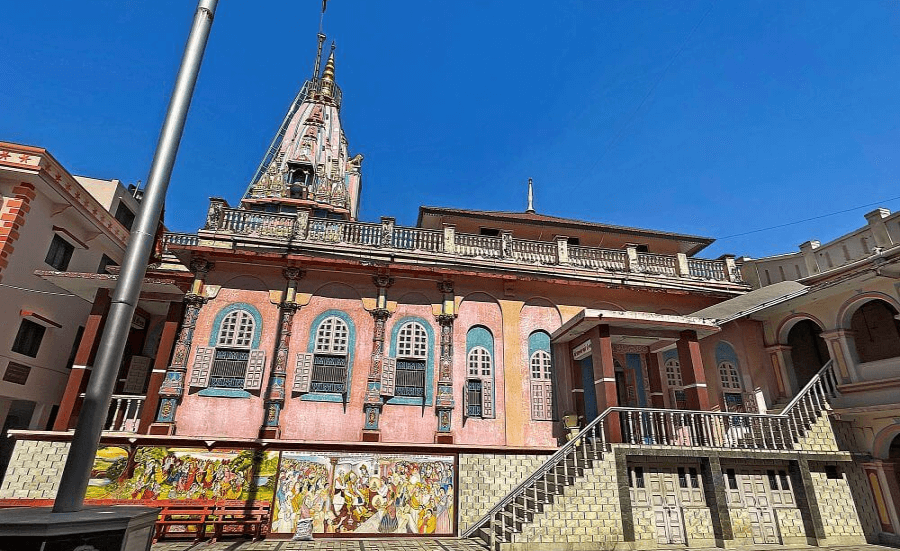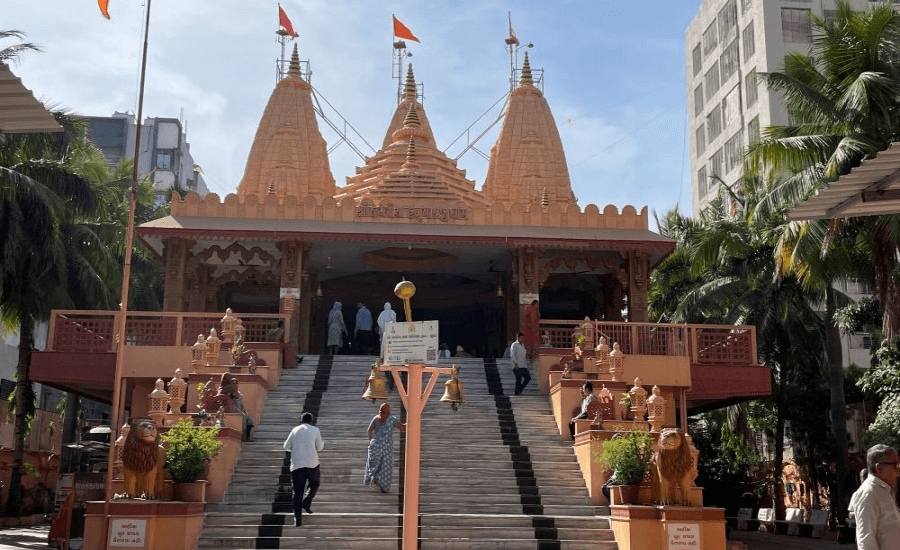
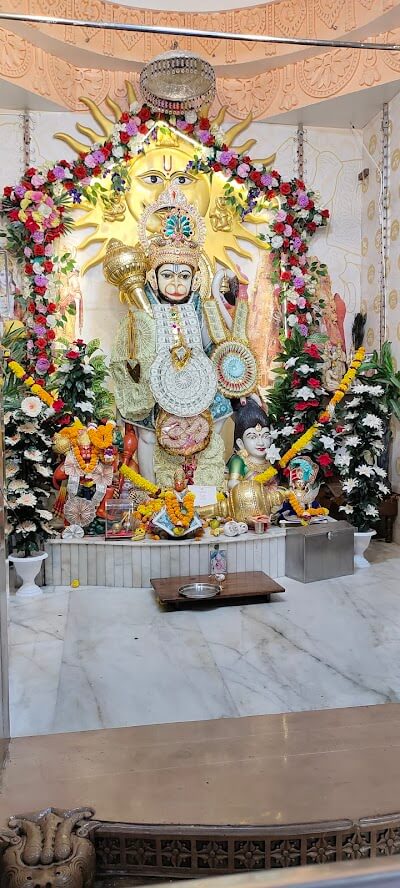 Kantheria Hanuman Temple is one of the most renowned temples in Surat. The idol of Hanuman installed here was consecrated using the sacred flame brought from the historical Kantheria Hanuman Temple in Palanpur, Gujarat. Constructed with red stone, this temple also houses a unique stone from the Ramayana era, said to have been used in building the Ram Setu (the legendary bridge to Lanka). The temple is a spiritual hub, attracting hundreds of devotees daily. The temple becomes especially lively on Hanuman Jayanti and during the Shravan month, with large gatherings of devotees.
Kantheria Hanuman Temple is one of the most renowned temples in Surat. The idol of Hanuman installed here was consecrated using the sacred flame brought from the historical Kantheria Hanuman Temple in Palanpur, Gujarat. Constructed with red stone, this temple also houses a unique stone from the Ramayana era, said to have been used in building the Ram Setu (the legendary bridge to Lanka). The temple is a spiritual hub, attracting hundreds of devotees daily. The temple becomes especially lively on Hanuman Jayanti and during the Shravan month, with large gatherings of devotees.
Situated in the Singanpor area of Surat, the temple is built on a high platform within a spacious compound. The red sandstone used for its construction was sourced from Bansi Pahadpur in Rajasthan, while the marble for the idols of Hanuman and Amba Mata was brought from Makrana, Rajasthan. Both idols were sculpted locally. The temple’s construction began in 2005 and the consecration ceremony of Hanuman’s idol took place during a grand religious festival held from 25th to 29th November 2010.
Before the consecration, a sacred flame (Jyot) was brought from the Kantheria Hanuman Temple in Palanpur, under the guidance of Mahant Kshipragiri Maharaj. The Palanpur Kantheria Hanuman Temple was built in 1916 by Nawab Sher Mohammed Khan of Palanpur. According to legend, the Nawab’s daughter, Zarina, was cured of a severe illness by the blessings of Mahant Ganeshgiri Maharaj. Following a divine vision of Lord Hanuman, the Nawab constructed the temple. It was from this historical temple that the sacred flame was brought to Surat.
The temple has a grand arched entrance, with the courtyard fully paved with paver blocks. Directly ahead, atop an elevated platform, stands the magnificent temple. The temple is adorned with three Urushringa-style spires and two pyramid-shaped subsidiary spires, adding to its architectural grandeur. Upon entering the compound, devotees find a raised platform with a pavilion housing a sacred fire pit (Homkund) and a small idol of the Goddess. Nearby, a golden shrine displays idols of various deities, including Jalaram Bapa, Shani Dev, Sai Baba, Ramdev Maharaj, Khodiyar Mata, Brahmani, Umiyamata, Annapurna, Shankar and Sheetla Mata.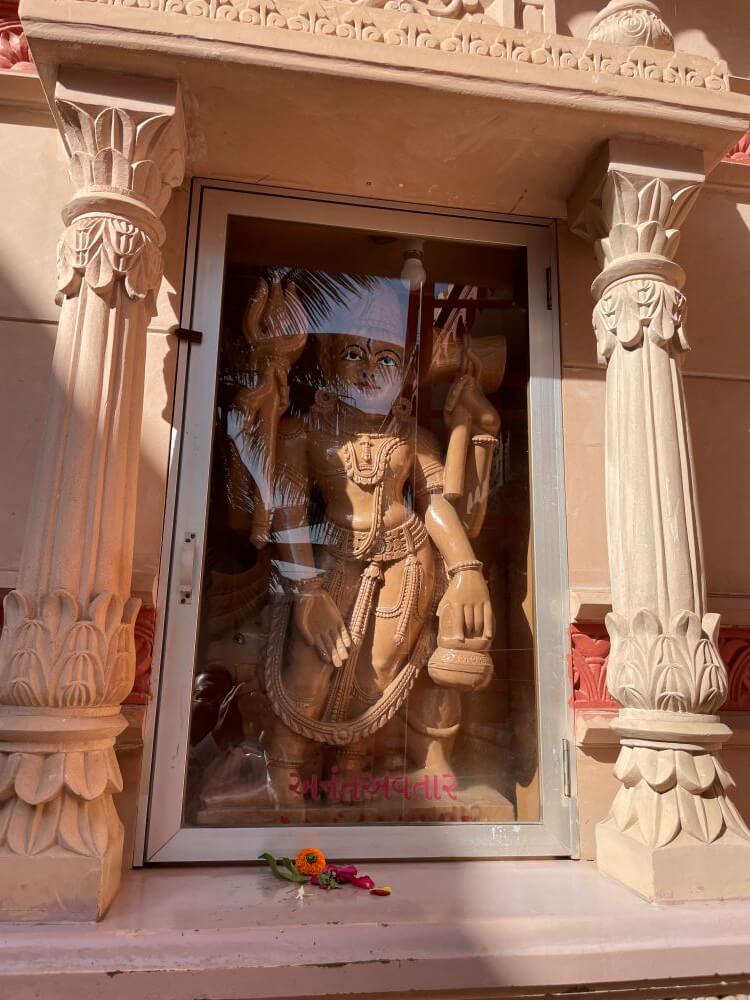 To the right is a pavilion with a large portrait of Hanuman and an idol depicting Hanuman engrossed in devotional prayer, dressed in colourful attire and a crown.
To the right is a pavilion with a large portrait of Hanuman and an idol depicting Hanuman engrossed in devotional prayer, dressed in colourful attire and a crown.
The temple is accessed via a wide staircase with 32 steps flanked by lion statues. The temple layout includes a Sabha Mandap (assembly hall) and a sanctum (Garbha Mandap). The Sabha Mandap is open and adorned with intricately carved square pillars and decorative Makara Toranas (arches). The upper sections of the pillars feature carvings of the Dashavatara (ten incarnations of Vishnu). The ceiling of the Sabha Mandap showcases vivid depictions of scenes from the Ramayana.
The temple features three sanctums. The main sanctum houses a standing idol of Hanuman, adorned with garments and jewellery. The idol holds a mace in one hand and the hair of the demoness Simhika in the other. In the Sundarakanda of the Valmiki Ramayana, the first chapter describes a demoness who lived in the ocean near Lanka. This demoness, named Simhika, attempted to devour Hanuman by capturing his shadow. The text narrates her thoughts: ‘Idam mama mahasattvam chirasya vashamagatam, iti sanchintya manasa chhayaam asya samakshipat.’ (Shloka 186) This translates to: ‘After many days, such a mighty being has come into my grasp. By consuming him, I will be satiated for a long time,’ she thought to herself and seized Hanuman’s shadow. 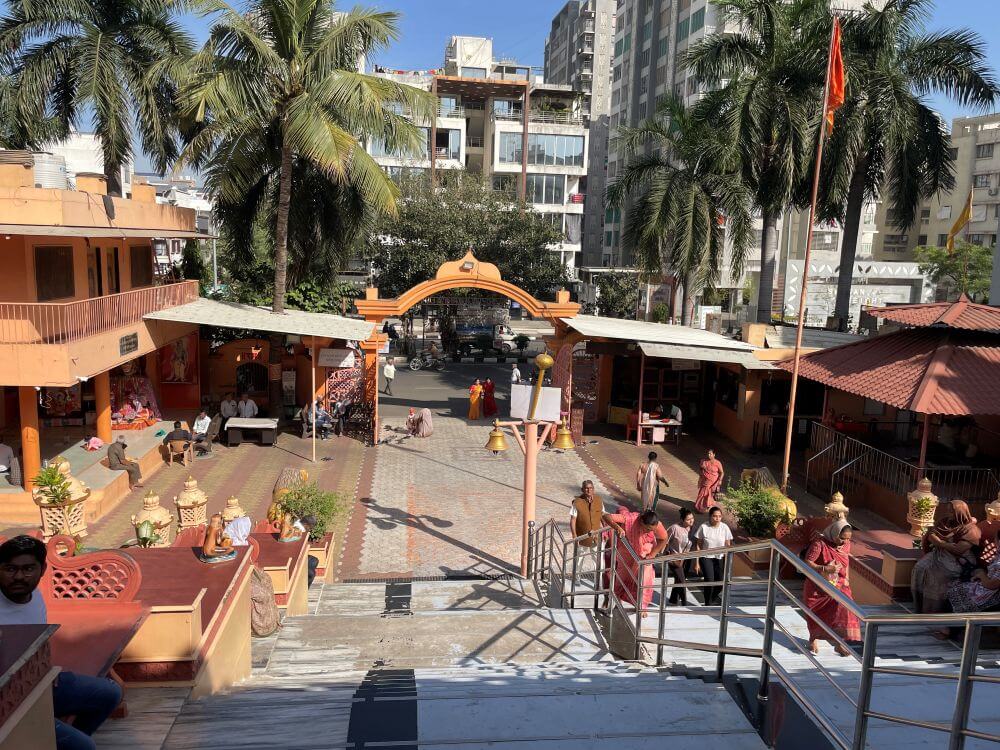 However, Hanuman defeated and killed her. According to the Vishnu Purana, Simhika was the daughter of sage Kashyapa and Diti, making her the sister of the demon Hiranyakashipu. She was also the mother of Rahu and Ketu, two celestial entities associated with eclipses.
However, Hanuman defeated and killed her. According to the Vishnu Purana, Simhika was the daughter of sage Kashyapa and Diti, making her the sister of the demon Hiranyakashipu. She was also the mother of Rahu and Ketu, two celestial entities associated with eclipses.
The left sanctum is dedicated to Amba Mata, depicted with eight arms holding various weapons. Her idol is flanked by silver lion statues and features depictions of her nine forms on the walls. The entrance to the sanctum displays carvings of Surya Narayan (Sun God) with arrows, bells, a conch and a trident.
The right sanctum is dedicated to Koteshwar Mahadev, this sanctum features a Shiva Lingam under a canopy of a hooded serpent.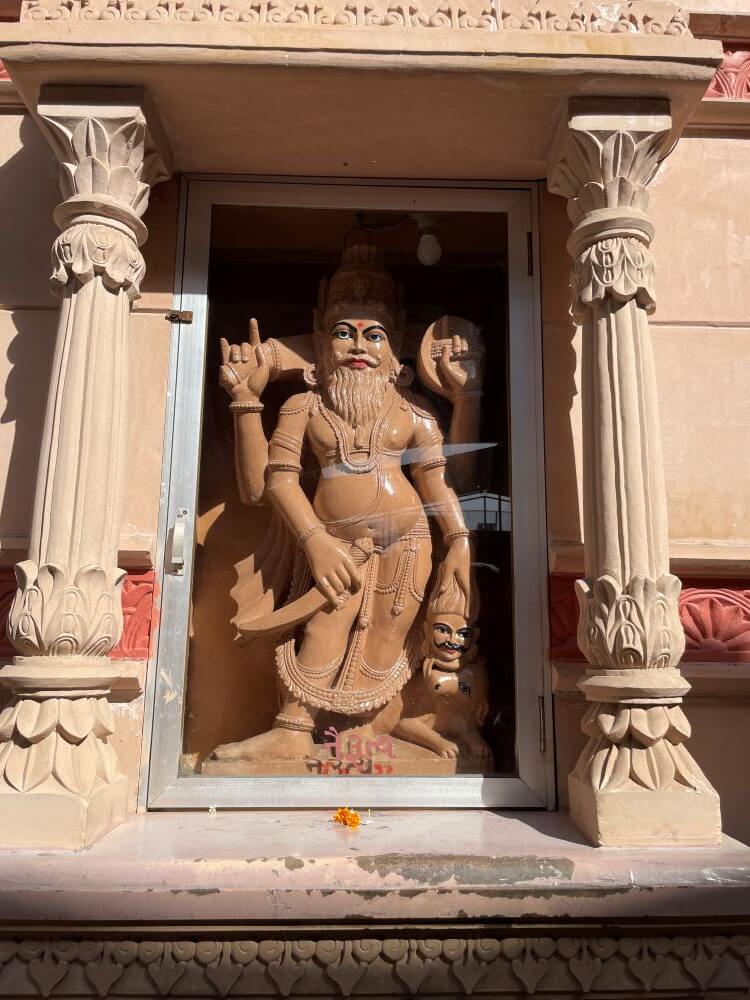 Nandi (Shiva’s vehicle) and a tortoise are positioned at the entrance. The walls display images of the 12 Jyotirlingas, while the sanctum houses depictions of Parvati and the Om symbol above. A special exhibit showcases a stone said to have been used in constructing the Ram Setu.
Nandi (Shiva’s vehicle) and a tortoise are positioned at the entrance. The walls display images of the 12 Jyotirlingas, while the sanctum houses depictions of Parvati and the Om symbol above. A special exhibit showcases a stone said to have been used in constructing the Ram Setu.
Visitors can partake in darshan at the temple between 5:00 AM to 12:30 PM and 3:30 PM to 10:30 PM daily. The morning aarti is performed at 5:30 AM and the evening aarti takes place at 7:00 PM. Devotees can also attend daily satsang (spiritual discourses) and participate in the Maruti Hom Yajna ritual. Every Tuesday, a recital of the Sundarakanda is conducted, while on Purnima (full moon days), the Hanuman Chalisa is chanted continuously from 1:00 PM to 7:00 PM. Additionally, devotees are offered prasada every Saturday and Saturdays. On Tuesdays large crowds of devotees gather at this temple.
The temple celebrates several festivals with great fervour, including Gokulashtami (Lord Krishna’s birth festival) and Guru Purnima. On Mahashivaratri, elaborate rituals such as Shiva worship, Rudrabhishek (a sacred anointing of Lord Shiva) and aarti are conducted. During Hanuman Jayanti, the temple attracts approximately 40,000 devotees and Mahaprasada is distributed to all visitors on this occasion.
In the auspicious month of Shravan, thousands of devotees visit the temple. A special highlight during this month is the creation of a Shiva Lingam replica made from approximately 125,000 rudraksha beads, placed within the temple premises. Devotees who visit during this time receive a rudraksha bead as prasada.
Managed by the Kantheria Dham Temple Charitable Trust, the temple conducts several philanthropic activities: A weekly food distribution program for the underprivileged every Sunday. A cowshed (Gaushala) is maintained within the premises. Monthly distribution of school supplies are made to underprivileged students in the area.
